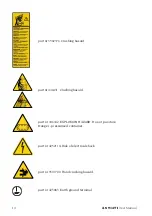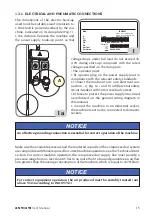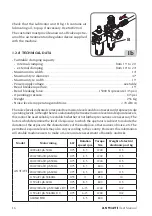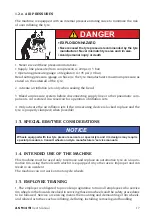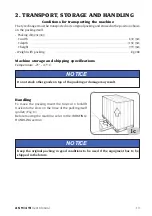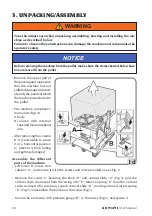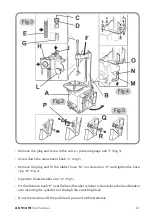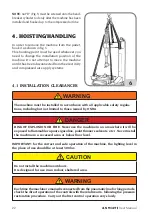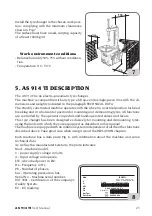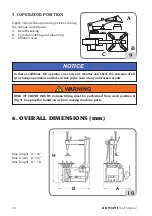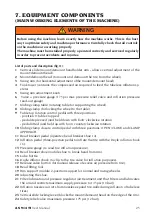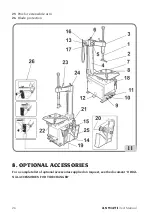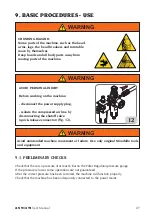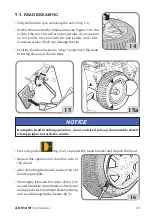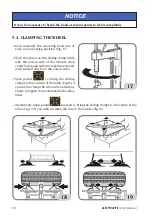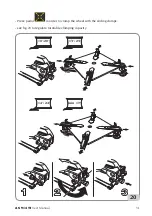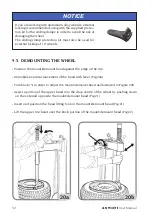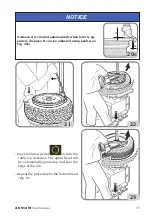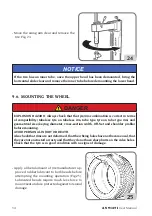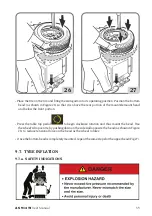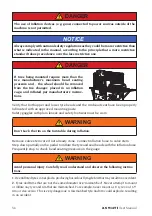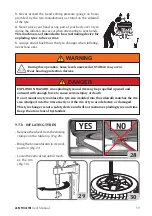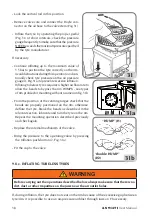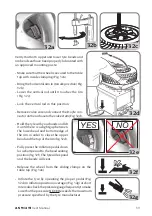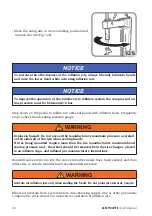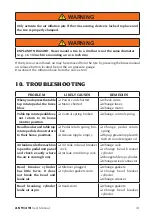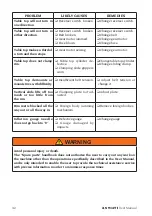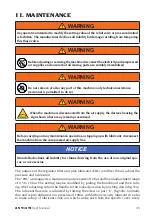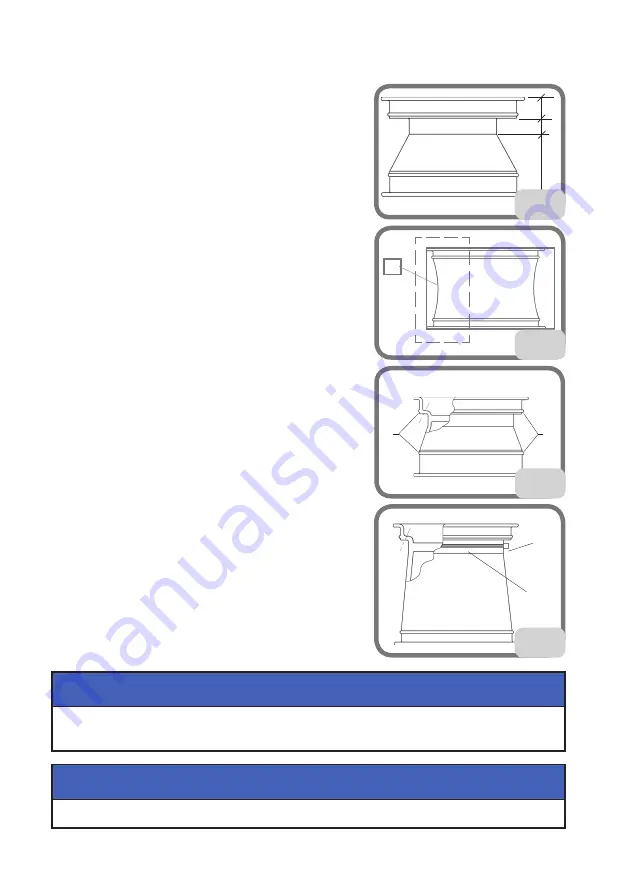
28
AS 914 TI
User Manual
9.2. DECIDINg FROM WhICh sIDE OF ThE WhEEL ThE TYRE
MUsT BE DEMOUNTED
See Fig. 13. Find the position of rim well A on the
wheel rim. Find the largest width B and the smallest
width C. The tyre must be mounted and demounted
with the wheel on the turntable with the smallest width
side C facing upwards.
special wheels
Alloy rim wheels:
some alloy rim wheels have minimal
rim wells A or no rim wells at all - Fig. 13a. These rims
are not approved by DOT (Department of Transporta-
tion) standards.
The initials DOT certify that tyres comply with the safety
standards adopted by the United States and Canada
(these wheels cannot be sold on these markets).
high-performance wheels (asymmetric curvature)
-
Fig. 13-b: Some European wheels have rims with a very
pronounced curvature C, except in the area of the valve
hole A where the curvature is less pronounced B. On
these wheels the bead must first be broken in the area
of the valve hole, on both the top and bottom sides.
Wheels with pressure sensor
- Fig.13c. To operate cor-
rectly on these wheels and avoid damaging the sensor
(which is incorporated in the valve, fixed with the
belt, glued inside the tyre, etc.) appropriate mount-
ing/demounting procedures should be followed (ref.
Approved mounting/demounting procedure for runflat
and UHP tyres)
The TPMs device (optional accessory) can be used to check the proper operation of
pressure sensor.
NOTICE
Remove any old balancing weights from the rim.
NOTICE
A
B
C
13
A
13a
A
B
C
13c
A
B
C
13b

